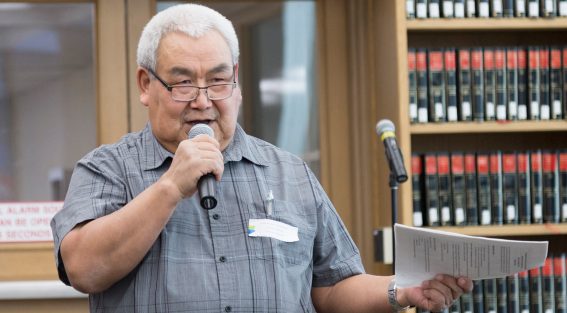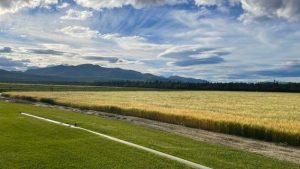A Journey of Resilience and Redemption: David Serkoak’s Fight for Justice

In the vast expanse of Canada’s Arctic, a tale of resilience and injustice unfolds. This is the story of David Serkoak, an Elder who lived through the relocations, a harrowing chapter in Canadian history. Against all odds, David has become a relentless advocate for his community’s rights, seeking justice and recognition for the Ahiarmiut people. In this article, we delve deep into David Serkoak’s life and work, exploring the historical backdrop of forced relocations, the enduring impact on the Ahiarmiut, and his ongoing quest for compensation and an apology from the Government of Canada.
The Ahiarmiut Relocations: A Dark Chapter in History
David Serkoak’s journey begins in the early 20th century when colonial institutions initiated a series of relocations of Inuit communities. These relocations were driven by the expansion of operations, particularly by the Hudson’s Bay Company, and the government’s aim to centralize Inuit populations under its control. The Ahiarmiut, a group of Inuit from the southern Kivalliq region of Nunavut, were one of the many communities affected.
The Ahiarmiut had a deep connection to their homeland around Ennadai Lake, relying on caribou hunting for their livelihood. David Serkoak fondly recalls his early memories of his parents living off the land, with his mother teaching him essential survival skills. However, their way of life was disrupted when the Canadian Army established a military radio station at Ennadai Lake after World War Two. Concerned about Inuit dependency on the station, the government decided to relocate the Ahiarmiut to Nueltin Lake in 1949, a decision made without consultation or preparation.
The Tragic Consequences of Relocation
The initial relocation marked the beginning of a tragic saga for the Ahiarmiut. Ordered out of their tents, their belongings bulldozed and buried, they were forced onto planes and relocated to Nueltin Lake. The lack of resources and understanding of the Arctic environment led to dire consequences. Some elders and vulnerable community members did not survive the harsh conditions, and many band-aid solutions were implemented without success.
Undeterred by their first return to Ennadai Lake, the government orchestrated a second relocation in 1958, airlifting the Ahiarmiut to Henik Lake without their consent. Food shortages, harsh winters, and isolation plagued the community. Starvation and exposure claimed lives, and the tragic episode culminated in a murder and subsequent trial that garnered national attention.
The Public Controversy and the Quest for Justice
The trial of Kikkik, a member of the Ahiarmiut, shed light on the disastrous consequences of government relocations, sparking a nationwide controversy. The publication of “The Desperate People” by Farley Mowat further exposed the suffering of the Ahiarmiut to the Canadian public. These events played a role in the government’s decision to resettle Inuit into centralized communities in the 1960s.
David Serkoak’s dedication to seeking justice and compensation for his community has been unwavering since the 1980s. Collaborating with Ahiarmiut Elders, academics, and lawyers, he has painstakingly researched and documented the history of the relocations. His work includes co-authored academic articles, school and university presentations, and a book on the subject. David’s efforts are not just a personal journey; they aim to educate Canadians about the Inuit relocations and their enduring impact.
The Power of Indigenous Storytelling
Central to David’s mission is the importance of Indigenous peoples telling their own stories. He believes that firsthand accounts are crucial for conveying the true impact of historical events. His work seeks to share not only the tragedy of the relocations but also the Ahiarmiut’s commitment to achieving justice. David emphasizes that their version of the story, their truth, should be told by them.
David Serkoak’s dedication recently led him to contribute to the Canadian Museum for Human Rights’ exhibition, “Rights of Passage.” This exhibition challenges the idealized notion of the Canadian nation by including stories that highlight Indigenous perspectives and rights violations. David’s participation aims to raise awareness about the relatively unknown Ahiarmiut relocations and their ongoing consequences.
The Urgent Need for Justice
As David continues his fight for justice, he is acutely aware that time is running out for many survivors of the relocations. The importance of addressing human rights infringements in a timely manner cannot be overstated. David’s personal goal is to ensure that the Ahiarmiut’s story is heard and recognized, not just for his community but for all Canadians. David Serkoak’s journey from a childhood disrupted by government relocations to becoming a steadfast advocate for justice is a testament to the power of resilience and storytelling. His efforts to share the truth of the Ahiarmiut relocations serve as a reminder of the need to confront and rectify historical injustices. Through his work, David Serkoak ensures that the Ahiarmiut’s voices are heard, and their struggle for justice continues to resonate.



